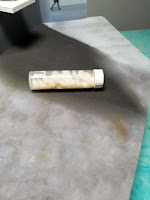Week 2: Math + Art
 |
| Fibonacci's Spiral |
 |
| Robert Greenham's Tango Final of British Championship Blackpool, 1969 https://www.markmitchellpaintings.com/blog/ the-fibonacci-sequence-in-artistic-composition/ |
This is Robert Greenham's Tango Final of British Championship, Blackpool, 1969 which is perfectly outlined by two spirals. More pictures that is related to the Fibonacci's Spiral can be found in the website. Pictures like this is obviously inspired by the pattern of Fibonacci's Spiral. The pictures are looking well arranged and natural.
 |
| Mona Lisa |
 |
| Greek Architecture |
Fibonacci's Spiral was not only used in drawings, but also the architectures. The spiral helped on its looking and balance as well.
From the lecture and resources from Professor Victoria Vense, it has been described that the art and Science are correlated and connected with math. It is vividly illustrated that the evolution of mathematics is correspond to the advance of science and art. I think it is inseparable between them. Without mathematics there would not be significant improvement on art.
“Fibonacci Blocks.” Fibonacci Blocks - Home, fibonacciblocks.com/.
“The Fibonacci Sequence in Artistic Composition.” The Art Blog by Mark Mitchell, www.markmitchellpaintings.com/blog/the-fibonacci-sequence-in-artistic-composition/.
“Mona Lisa.” The Fibonacci Sequence, thefibonaccisequence.weebly.com/mona-lisa.html.
“Flatland.” Flatland, by E. A. Abbott, 1884, www.ibiblio.org/eldritch/eaa/FL.HTM.
ABBOTT, EDWIN. FLATLAND: a Romance of Many Dimensions. VALUE CLASSIC REPRINTS, 1884.



I like that your examples of how arts and math are closely related. The research of math has brought so many advantages to art fields to find the golden ratio which is used in the composition of pictures for pursuing perfect balancing. So that it became a mandatory tool in the art fields in an example as you mentioned on the blog Fibonacci's sequence. Your posting is really fascinating about the the relationship of math and art.
ReplyDeleteHello Chanhoe!
ReplyDeleteI like how you compared math and art are very related by using Fibonacci's sequence. When I read the articles and look on the websites, not only arts are related to Fibonacci's sequence, but also nature is related to art! It is very interesting that everything is somewhat related to art and math combined!